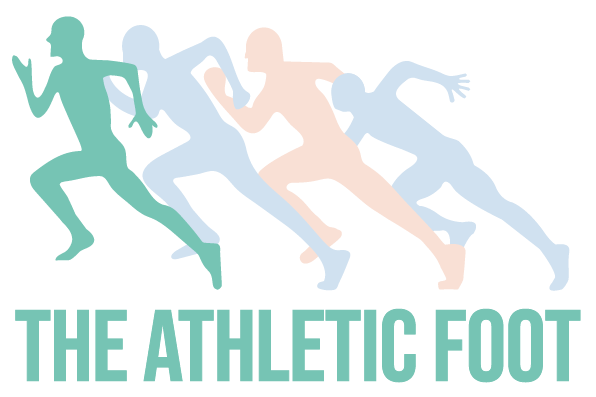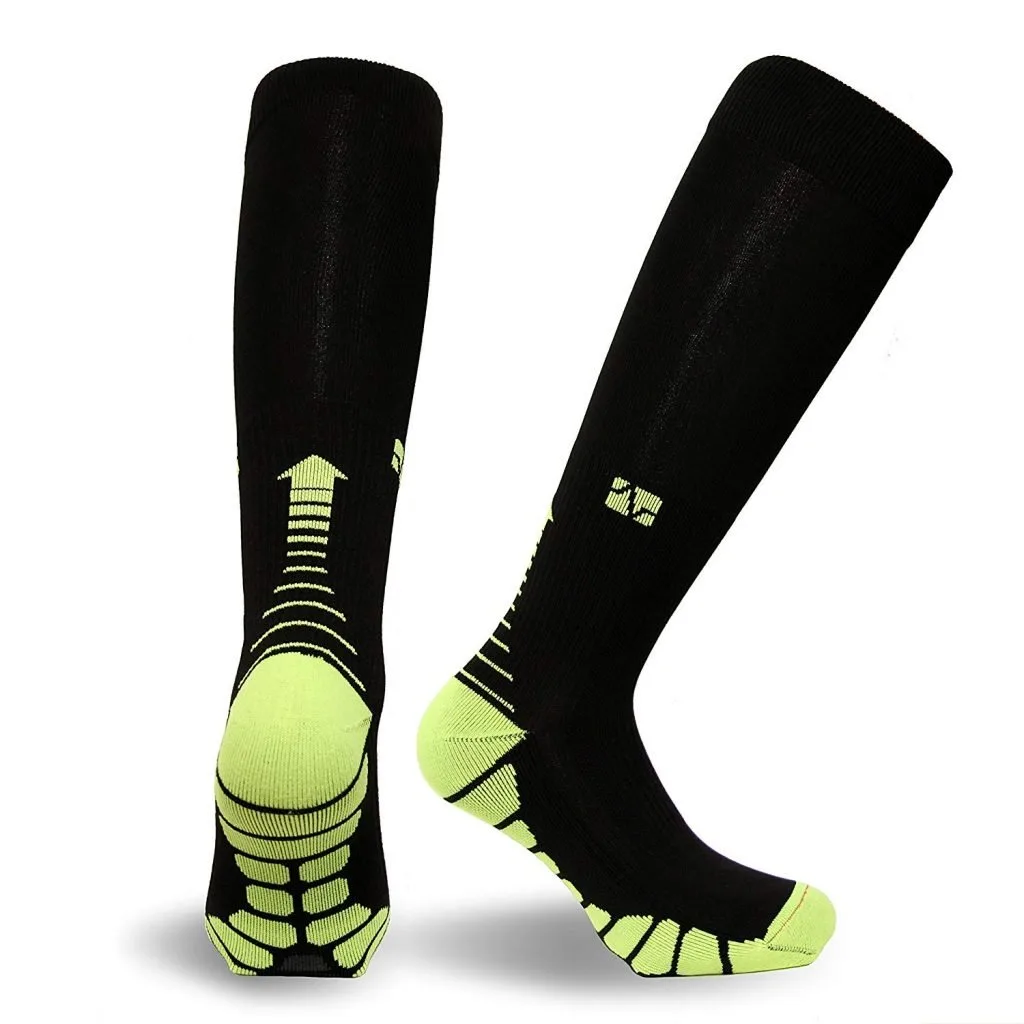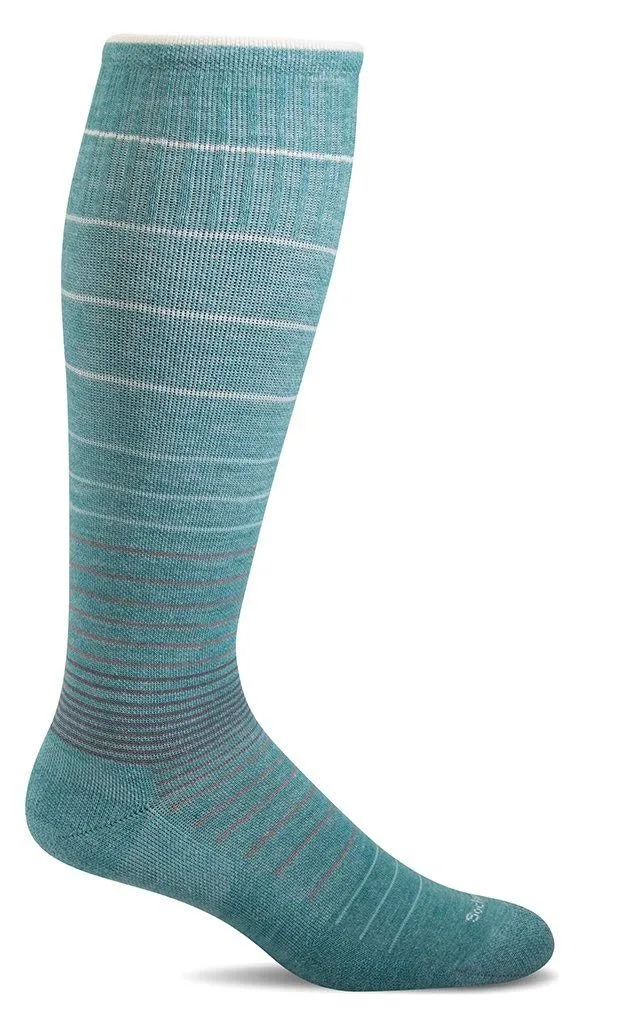Do you feel pain in your legs after a long run? Do your legs swell up often? If yes, then you need compression socks to ensure proper blood circulation in your legs and feet and maintain adequate foot pressure. These socks are specially designed to prevent leg and foot-related issues that not just bother the athletes, but everyone.
If you don’t know much about these socks, don’t worry. We are here to tell you everything that you should know about compression stocks. We’ll also be covering a very important topic – how to wear compression socks. So, let’s get going and begin the learning process.
Contents
First things first – What are compression socks?
Compression socks are special kinds of socks that are specifically designed to prevent venous issues such as phlebitis, thrombosis, edema, etc. They an important part of your running gear that bring down the venous pressure, keep venous stasis at bay, and help in relieving heaviness in the legs. They help in easing the pain and preventing the occurrence of venous issues in the future.
These elastic socks are meant to be worn along the legs to compress the limbs. They are worn by athletes to improve their performance on the field and accelerate recovery after strenuous workout sessions.
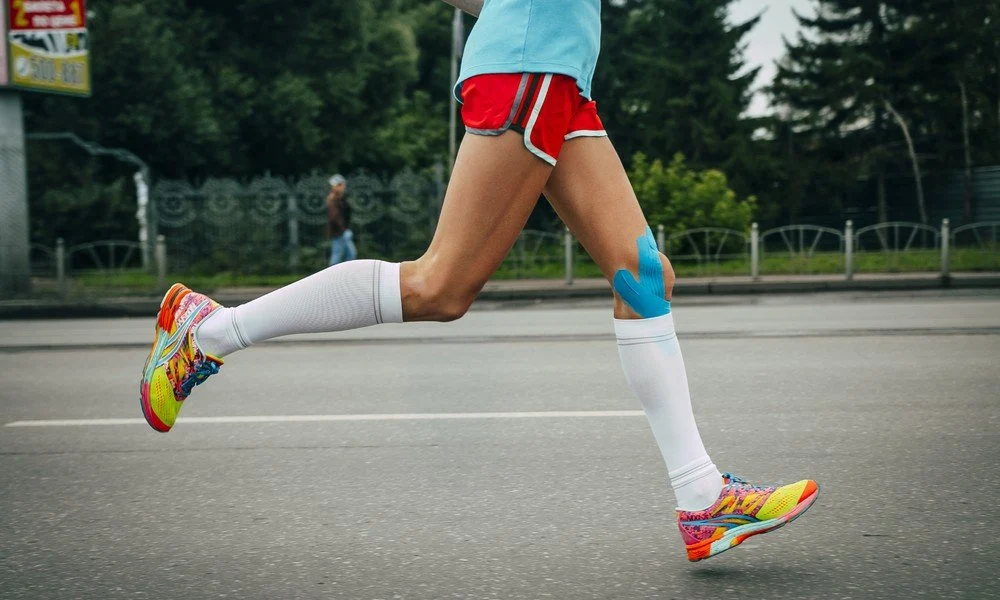
How do compression socks work?
These are highly elastic socks that compress the legs in a true sense. They reduce the diameter of the swollen veins and enhance the blood flow through the veins along with improving the effectiveness of the valves.
When should compression socks be used?
You may require compression socks if you are suffering from:
- Enlarged and swollen veins called varicose veins
- Lymphoedema (painful swelling of body tissues)
- Deep vein thrombosis
- Phlebitis
- Lipodermatosclerosis
- Chronic venous insufficiency
- Muscle soreness and pain
When should compression socks be avoided?
There are a few conditions in which wearing compression socks can be a little risky. If you have any one or more of the below mentioned conditions, you must be very cautious while wearing compression socks. The conditions include,
- Advanced peripheral obstructive arterial disease
- Septic phlebitis
- Heart failure
- Oozing dermatitis
- Advanced peripheral neuropathy
How do compression socks help athletes?
Compression socks apply pressure to the lower legs and boost the blood flow in the legs. Athletes prefer to wear these socks during long runs to boost their performance and also, facilitate post-run recovery.
Compression socks enhance performance
Athletes prefer wearing compression socks during exercise or running as they help in boosting the performance. These socks increase blood flow and oxygen supply to the tissues. They bring down vibration, jarring, as well as muscular stress. By compressing the calf muscles, they facilitate the venous blood flow and thereby, improving endurance and running time.
These socks are best for you if you have shin splints as they prevent the soft tissues from damage. They also enhance the balance while performing activities.
Compression socks boost recovery
If you are looking for ways to boost muscle recovery after running or workout, you should consider wearing compression socks. These socks help in limiting muscle damage, reducing soreness, and improving muscle recovery.
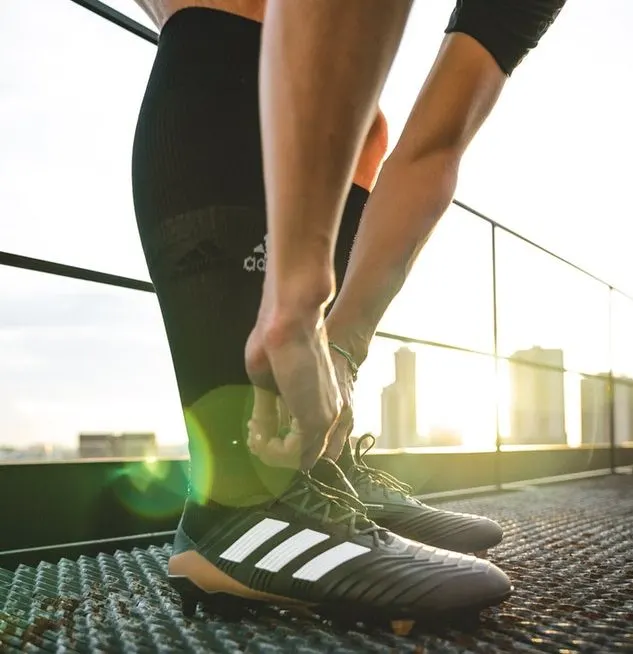
How to wear compression socks?
Putting on compression socks can get a little difficult for the beginners. If you want to know how to wear compression socks, carefully follow the instructions mentioned below.
Wear them in the morning
Your legs are least inflamed and swollen in the morning hours. This is why you should wear them early in the morning. Just get out of your bed and put them on.
Apply powder on your legs
Apply some baby powder on your legs before wearing the socks. This will make it very easy for you to slide the socks up.
Wear gloves
If you find it difficult to pull up the stockings, wear a pair of rubber gloves. Wearing gloves help in attaining a good grip on the socks. Also, it prevents accidental ripping of nails.
Maintain the pressure
Ideally, socks should be tightest around the ankles and taper as they reach calves. They should end two inches below the knees. If the pressure is not ideal, there is no point wearing them. You should immediately get the right fit for you to derive optimum benefit from your socks.
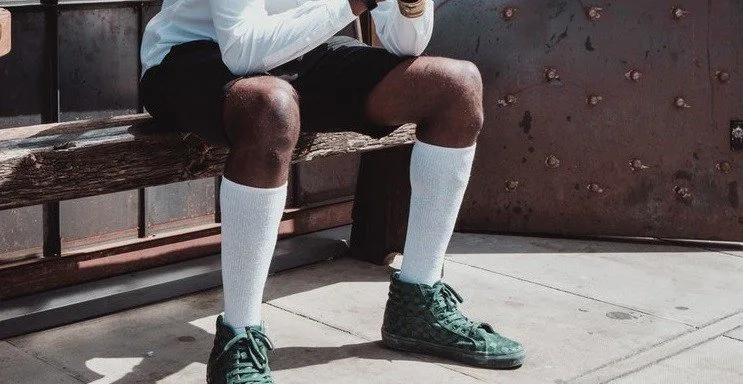
What are the things that you should keep in mind while buying compression socks?
Do you always find yourself in a fix while buying compression socks? Do you always end up with a wrong pair of compression socks?
Let us tell you the things that you should keep in mind while buying compression socks. If you follow these tips, you will definitely find the best pair of socks for you.
Always buy the right fit
Never compromise on the fit. Always make sure that you are buying the socks that perfectly go with the size of your legs.
The length of the socks should be perfect to attain apt compression. They should end below the knee covering the calf and shin.
The socks should also go with the measurement of your ankle.
Go for a good material
The fabric of your compression socks is also an important factor to consider while buying compression socks. Always go for a lightweight and breathable fabric. There are many compression socks on the market that come with excellent features like moisture-absorption and cooling.
Socks made from good fabric are easy on the skin and don’t irritate it.
Go for dark colors
Never buy compression socks in light colors. Always buy them in colors such as black, gray, navy, etc.
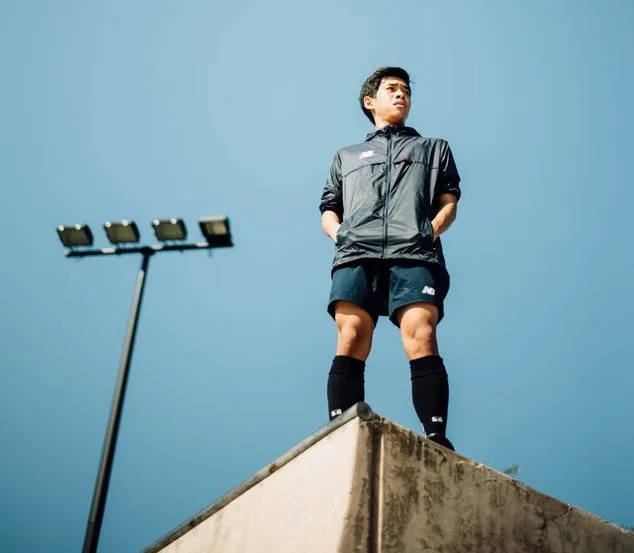
How to take care of compression socks?
If you want to enhance the durability of your compression socks and make them last longer, it is important that you take care of your compression socks on a day to day basis. Ideally, if taken care, compression socks can last up to 6 months.
You should buy two pairs of compression socks and alternate them as wearing one can make it wear quickly.
Wash the socks with mild soap or detergent and lukewarm water. Let them dry completely. Never wear them when they are damp.
3 Best-Selling Compression Socks on the Market
Let’s now look at 3 of the best compressions socks on the market.
Vitalsox VT1211 Silver DryStat
Product specifications
Type | Compression socks for running |
Fabric | 70% Silver Drystat; 10% Spandex; 10% Lycra; 10% Nylon; |
Best for | Support and comfort, athletic graduated compression |
Weight | 3.2 oz. |
Model no. |
If you’re looking for compression socks with light padding, Vitalsox VT1211 compression socks can be an ideal pick for you.
The compression begins at a lower arch of the foot and travels all the way to your calf for a comfortable and secure fit. The Silver Drystat material used to make these socks comes with antifungal and antibacterial properties.
Even if you wear these compression socks for extended periods, they won’t stink. The 4-way stretch that flexes in 4 directions makes it very convenient to wear the compression socks.
Pros
- Ideal for arch support and plantar ligament
- Light padding
- Comfortable to wear
- Dries up quickly
- Odor-free material
Cons
- Retains heat
Sockwell Circulator
Product specifications
Type | Compression socks for running |
Fabric | 32% Merino Wool; 32% Stretch Nylon; 31% Bamboo Rayon; 5% Spandex; |
Best for | Athletic graduated compression, swelling, proper blood circulation |
Weight | 0.6 oz. |
Model no. |
Made in the U.S., the Sockwell Circulator compression socks are ideal for tackling swelling in the feet and ensuring proper blood circulation in your legs and feet. The striped-pattern compression socks come with temperature control properties and absorb moisture to keep your feet sweat-free and dry.
These graduated compression socks come with 4 compression points for a comfortable day. Another good thing about these socks is that there’s no toe seam to irritate you. Different models of the compression socks are available for men and women.
Pros
- Seamless toe
- 4 compression zones
- Moisture absorbing capability
- Temperature control property
- Comfortable fit
Cons
- Threads may become loose with continued usage
Mojo Recovery and Performance
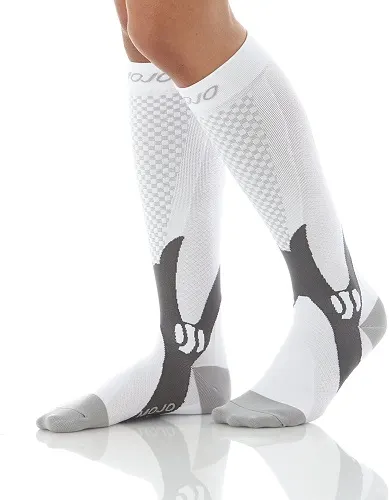
Product specifications
Type | Compression socks for running |
Fabric | Latex-free, 70% Nylon 10% Lycra Spandex 20% Coolmax Nylon |
Best for | Medical grade compression |
Weight | 1.6 oz. |
Model no. | – |
If you’re looking for stylish compression socks with enough padding and cushioning in a high-impact area of your legs and feet, Mojo Recovery and Performance Compression Socks can be a great buy.
The fabric is stretchable and soft. If you’re suffering from venous issues or blood circulation issues in your legs and feet, you can use these medical grade compression socks for continued relief and comfort.
Pros
- Stretchable fabric
- Medical grade compression
- Reinforced toe and heel
- Ideal for venous and blood circulation issues
Cons
- Sizes usually run small
Conclusion
In this article, apart from learning how to wear compression socks, we’ve also touched on other aspects of compressions socks such as buying tips, uses, when to avoid using them, and have also identified 3 of the best compression socks on the market.
Using all the valuable information provided in this article, you can make the best use of compression socks and get respite from venous issues and several other problems related to your leg and feet. If you have any questions related to anything mentioned in the article or something that we’ve missed, please feel free to post your questions in the comments section below.
Further read:
- The Best Compression Socks for Running: How to Find the Best Pair?
- A Guide On How to Pick the Best Trail Running Socks
- Spartan Race vs Tough Mudder Compared – Which Obstacle Race is Better? - January 22, 2022
- Brooks Addiction Walker vs New Balance 928: Which is Best? - December 7, 2021
- Brooks Ravenna vs Adrenaline – Which is Best for You? - December 4, 2021
